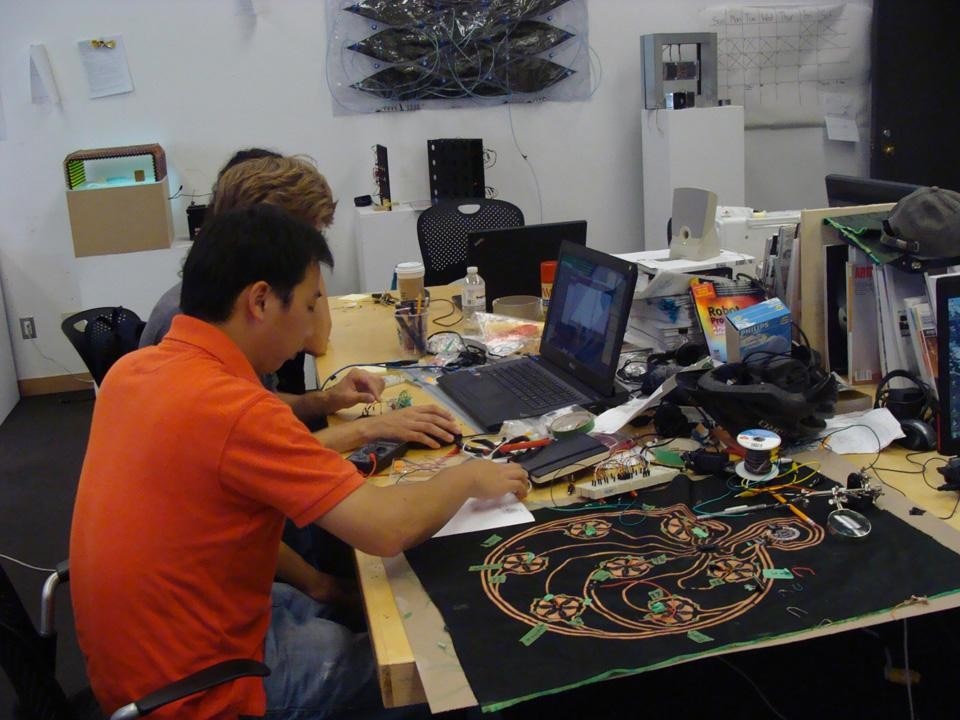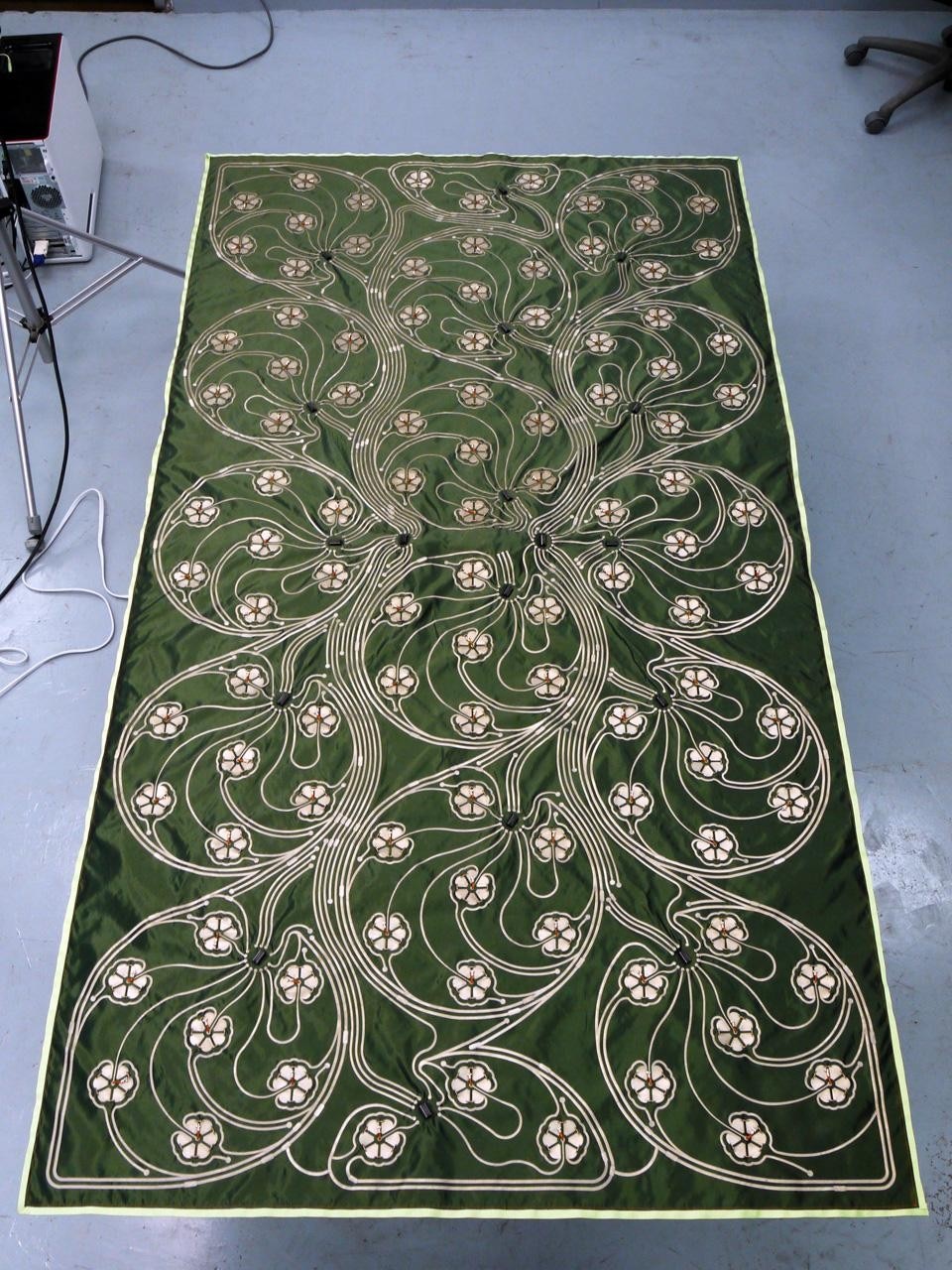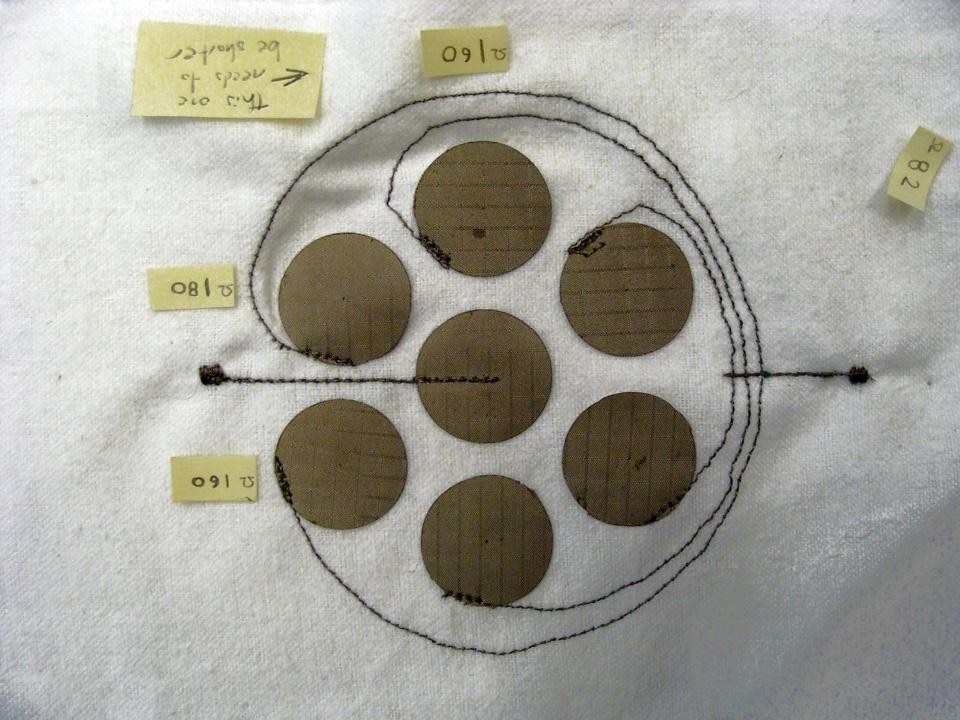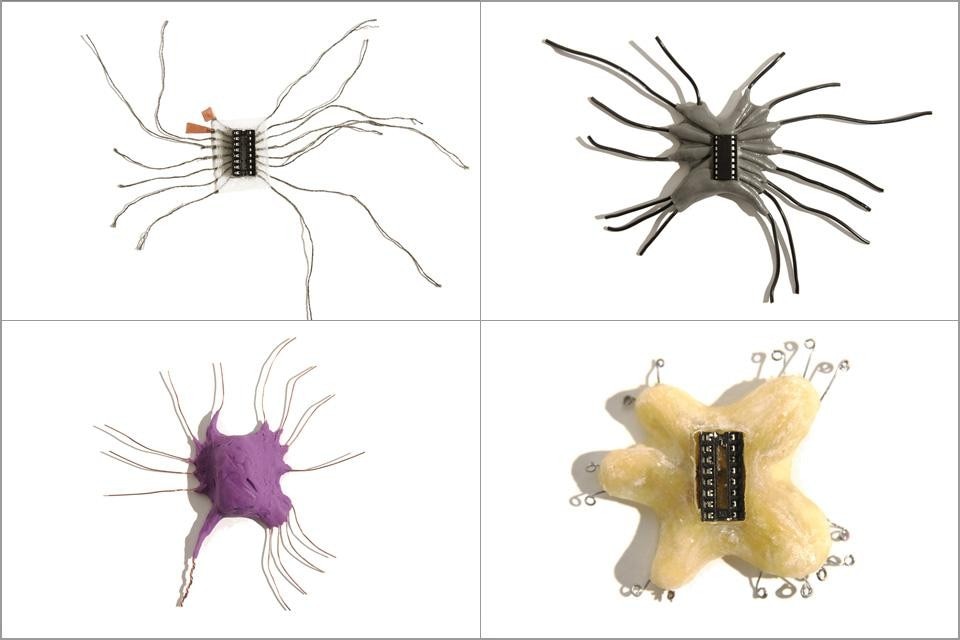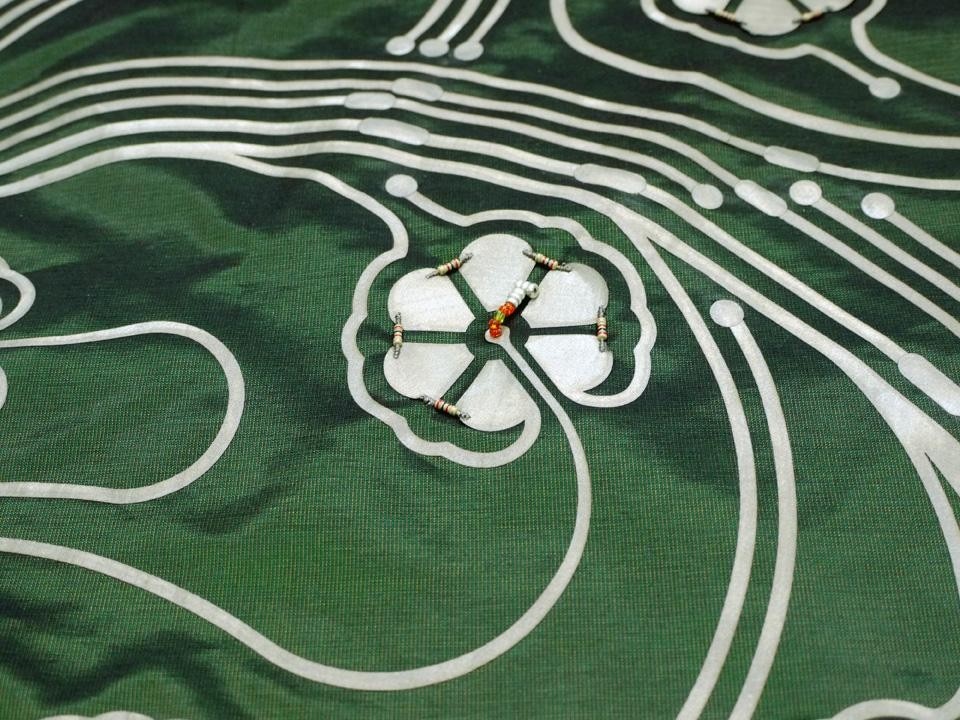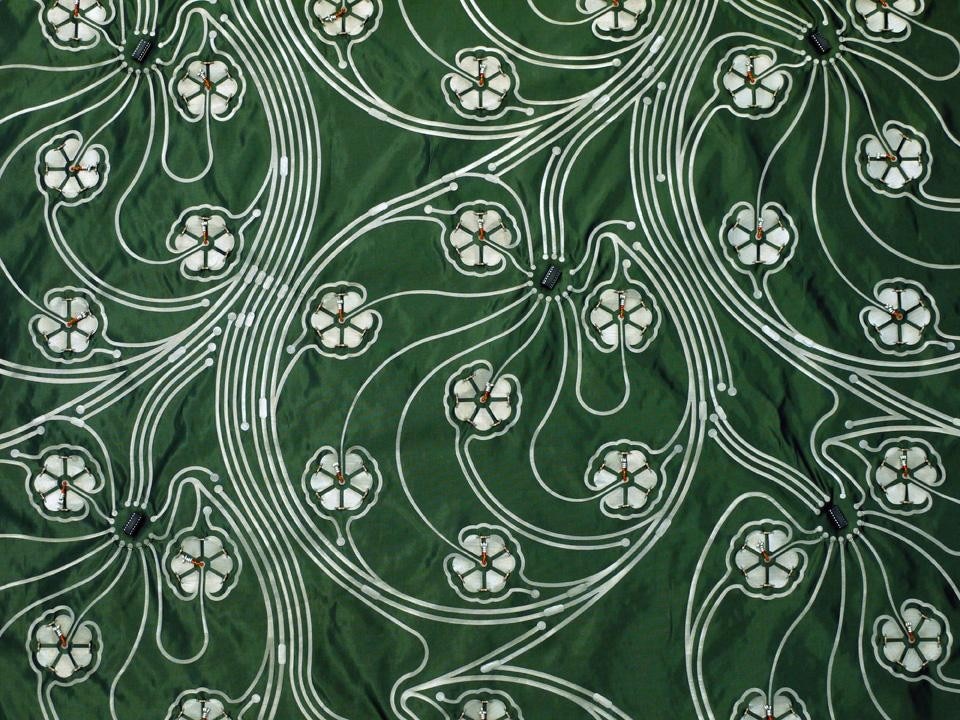The distribution of sensors is based on an underlying hexagonal structure. Each flower occupies a hexagonal cell, surrounded by six neighbors. As the software receives directional (N,S,E,W) input from a cell, it is able to reconstruct a slope based on the position of that cell and its immediate neighbors, generating essentially a surface of peaks and valleys. (Processing)
IM Blanky
RAD team: Carol Moukheiber, Christos Marcopoulos, Rodolphe el-Khoury, Valentina Mele, Sebastian Savone, Yi Ping See, Samar Sabie, Dina Sabie, Jonah Ross-Marrs
